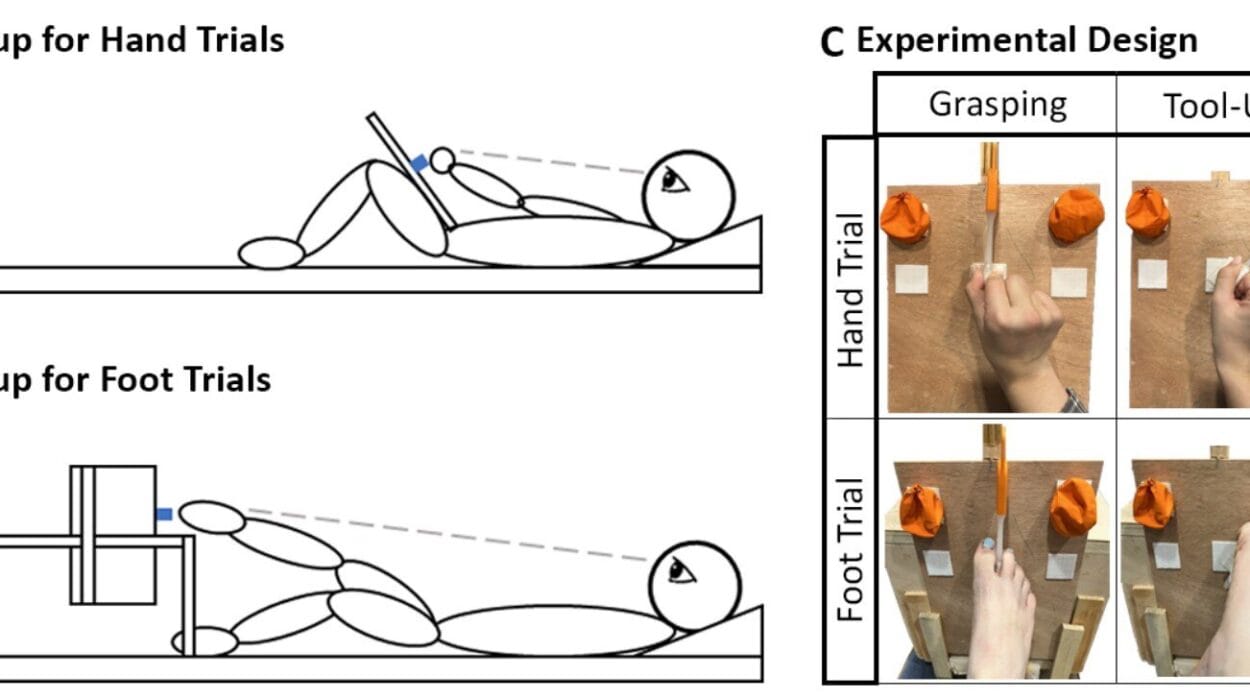Artificial Intelligence has transformed from a futuristic concept into a defining reality of the 21st century. Among its most fascinating and rapidly advancing branches is Generative AI, a field that enables machines to create—producing text, images, music, code, and even video that can rival human creativity. Behind this apparent magic lies a complex scientific foundation that blends mathematics, computer science, neuroscience, and linguistics. Understanding the science behind generative AI requires delving into how these models learn patterns from massive amounts of data, how they generate new outputs, and what theoretical frameworks guide their design and function.
Generative AI is not just an engineering marvel; it is a profound scientific achievement rooted in decades of research in machine learning, neural networks, and probability theory. The core idea is simple yet revolutionary: if a system can learn the underlying statistical structure of data, it can generate new samples that resemble the original distribution. This concept is the beating heart of all generative models, from early probabilistic frameworks to today’s large-scale transformer-based architectures like GPT, DALL·E, or Stable Diffusion.
To fully grasp generative AI, we must unpack how it processes information, what mathematical principles it relies on, and how its architectures simulate aspects of human cognition.
The Foundations of Generative Artificial Intelligence
Generative AI stems from the broader field of machine learning, particularly a subfield called unsupervised learning. Traditional machine learning systems are trained to make predictions based on labeled data—for instance, recognizing cats in images or predicting house prices from input features. Generative models, by contrast, are trained not merely to recognize patterns but to produce new examples consistent with what they have learned.
The fundamental goal of a generative model is to approximate the probability distribution of a dataset. If we denote the data as a set of observations ( X = {x_1, x_2, …, x_n} ), then the model attempts to learn a function ( P(x) ) that captures how likely a data point ( x ) is to occur. Once the model approximates ( P(x) ) accurately, it can sample from this distribution to generate new, similar data.
This approach contrasts with discriminative models, which learn conditional probabilities ( P(y|x) )—the likelihood of a label ( y ) given input ( x ). For example, a discriminative model might classify an image as “cat” or “dog,” whereas a generative model would learn what cats and dogs look like well enough to produce entirely new, realistic images of them.
The power of generative models lies in their ability to understand structure and context rather than just memorize examples. This understanding enables them to synthesize text with coherent meaning, generate art with stylistic consistency, or compose music that follows harmonic patterns—all without explicit programming.
The Mathematical Core: Probability and Statistics
At its heart, generative AI is built upon the mathematics of probability theory. The goal is to model how data is distributed across a high-dimensional space, such that new samples can be drawn from the learned distribution.
Suppose we want to model human language. Every sentence we write is a sequence of words, and each word depends on the ones that came before. Mathematically, this dependency can be expressed as:
[
P(w_1, w_2, …, w_n) = \prod_{i=1}^{n} P(w_i | w_1, w_2, …, w_{i-1})
]
This formula states that the probability of a sentence is the product of the conditional probabilities of each word given its preceding context. Generative language models learn to approximate these conditional probabilities. By doing so, they can predict the next word in a sequence or generate entirely new sentences that follow linguistic rules.
For image generation, the model instead deals with pixel distributions or latent features extracted from them. The statistical principles remain the same—understanding how elements relate to one another and how they can be combined to form new, coherent wholes.
In practice, generative AI employs optimization techniques to minimize the difference between the model’s predicted probability distribution and the true data distribution. This is often achieved by minimizing a loss function, such as cross-entropy or Kullback-Leibler (KL) divergence, which measures how one probability distribution diverges from another.
Neural Networks: The Computational Backbone
The most powerful generative models today are built upon artificial neural networks—computational systems inspired by the human brain. Neural networks consist of layers of interconnected nodes (or “neurons”) that process and transform data through weighted connections. These networks are trained by adjusting the weights to minimize prediction errors, gradually learning complex representations of the data.
The architecture of a neural network plays a critical role in how it generates information. Early generative models relied on fully connected networks or convolutional neural networks (CNNs) for image data. However, modern systems increasingly use transformer architectures, which have revolutionized both language and vision generation.
Each layer in a neural network extracts different levels of abstraction. In image models, the first layers may detect edges and colors, while deeper layers identify shapes, textures, or even entire objects. In language models, early layers learn word embeddings—dense vector representations that capture semantic meaning—while deeper layers grasp grammar, context, and narrative structure.
Through this hierarchical processing, neural networks can model the intricate dependencies that make human-like generation possible.
The Evolution of Generative Modeling
The history of generative AI is a story of continuous innovation, driven by the quest to make machines not only recognize but create. Early generative approaches were based on simple probabilistic models such as Markov chains and Hidden Markov Models (HMMs). These methods could model sequential data like text or speech but lacked the capacity to represent complex, high-dimensional relationships.
In the 2000s, restricted Boltzmann machines (RBMs) and deep belief networks (DBNs) introduced deeper, layered architectures capable of unsupervised learning. Yet the real breakthrough came with the rise of Generative Adversarial Networks (GANs), Variational Autoencoders (VAEs), and Transformers.
GANs, introduced by Ian Goodfellow in 2014, revolutionized generative modeling by framing the problem as a game between two neural networks: a generator and a discriminator. The generator tries to produce data that looks real, while the discriminator attempts to distinguish fake data from genuine samples. Through this adversarial process, the generator learns to produce highly realistic data, leading to synthetic images, art, and even human faces indistinguishable from real ones.
Variational Autoencoders, on the other hand, approach generation through a probabilistic lens. They compress data into a latent space—a lower-dimensional representation—and then reconstruct it back into the original space. By sampling points in the latent space, VAEs can generate new examples that share characteristics with the training data.
Transformers, introduced in 2017, represent a paradigm shift. Unlike previous architectures that processed data sequentially, transformers use self-attention mechanisms to capture long-range dependencies efficiently. This ability to model context across vast sequences has made them the foundation of large-scale generative systems like GPT, DALL·E, and Claude.
The Transformer Revolution
The transformer architecture marked the beginning of the modern era of generative AI. At its core lies the attention mechanism, which allows the model to weigh the importance of different parts of the input when generating each output.
In a transformer, every token (a word, subword, or symbol) interacts with every other token through self-attention. This process computes how much each element of a sequence should influence every other element, enabling the model to understand context and relationships with remarkable depth.
The transformer’s encoder-decoder design allows it to handle both understanding and generation. The encoder processes the input sequence and builds a contextual representation, while the decoder generates output step by step, using both the encoded information and previously generated tokens.
The key advantage of transformers is scalability. They can be trained on enormous datasets containing billions of words or images, learning not just patterns but conceptual knowledge. This scalability has enabled the rise of Large Language Models (LLMs) such as GPT, PaLM, and LLaMA, which can generate human-like text, translate languages, write code, and even simulate reasoning.
Learning Through Gradient Descent and Backpropagation
The learning process in generative AI relies on gradient descent, an optimization algorithm that minimizes error by adjusting model parameters incrementally. During training, the model makes predictions, compares them to actual data, calculates an error (loss), and then updates its parameters to reduce that error.
The tool used to compute how much each parameter contributes to the loss is called backpropagation. It propagates the error backward through the network, computing gradients for every weight using the chain rule of calculus. Over many iterations, the model’s weights converge to values that minimize the overall loss.
This mathematical process—though seemingly mechanical—is what enables generative models to develop intricate representations of the world. When trained on vast text corpora, an LLM internalizes not just word frequencies but deep semantic and syntactic relationships. When trained on images, a diffusion model learns the underlying structure of visual space, enabling it to reconstruct and generate complex scenes.
Latent Space and Representation Learning
One of the most profound concepts in generative AI is latent space—a compressed, abstract representation of data where similar features cluster together. In this space, high-level attributes such as shapes, colors, or linguistic meanings are encoded as mathematical vectors.
For example, in a generative model trained on human faces, each point in the latent space corresponds to a possible face. Small movements in one direction might change the person’s expression, while movements in another might alter age, gender, or lighting. This continuous, interpretable structure allows for controlled generation, where users can manipulate latent variables to produce desired outcomes.
In language models, latent spaces capture relationships between words and concepts. The famous example “king – man + woman ≈ queen” illustrates how semantic analogies emerge naturally from these high-dimensional embeddings. This emergent structure is what allows models like GPT to generate text with logical coherence and contextual awareness.
Diffusion Models and Probabilistic Generation
Another major breakthrough in generative AI is the development of diffusion models, which have become central to modern image generation systems like DALL·E 2 and Stable Diffusion. These models work by gradually transforming random noise into coherent images through a process that mirrors diffusion in physics.
Training a diffusion model involves learning to reverse this noising process. The model observes many images degraded by random noise and learns how to predict and remove the noise step by step. When generating, it starts from pure noise and applies the learned reverse process, reconstructing a new image consistent with the training data.
Mathematically, this process is modeled as a stochastic differential equation (SDE) that transitions data between distributions. The elegance of diffusion models lies in their ability to generate high-quality, diverse outputs that reflect the full variety of the training data.
The Role of Data in Generative AI
Generative AI’s capabilities are directly linked to the quality and quantity of data it learns from. Data provides the raw experience through which the model builds its internal understanding of the world. For language models, this data may include books, articles, websites, and code repositories. For image models, it may consist of millions of labeled or unlabeled images from diverse sources.
The model does not memorize individual examples but captures statistical regularities across vast datasets. However, this dependence on data introduces both scientific and ethical challenges. Datasets may contain biases, inaccuracies, or private information, all of which can be reflected in the model’s outputs. Thus, the science of generative AI must also grapple with issues of fairness, interpretability, and accountability.
Emergent Behavior and Scaling Laws
As generative models grow larger, they begin to exhibit emergent behaviors—abilities that were not explicitly programmed or predicted. These may include performing arithmetic, following instructions, or reasoning across domains. Scientists have observed that such capabilities often appear suddenly once the model exceeds a certain scale in parameters or data size.
This phenomenon follows what are known as scaling laws in AI. Empirically, researchers have found that model performance improves predictably with more data, larger architectures, and greater computational power. These scaling relationships suggest that intelligence-like behavior can emerge from statistical pattern learning when systems reach sufficient complexity.
Human Cognition and Neural Inspiration
Although artificial neural networks are not direct replicas of the brain, they are inspired by its basic principles. Both biological and artificial systems process information through interconnected units that adapt based on experience. Neuroscience and AI increasingly intersect as scientists explore how human cognition can inform better algorithms and how AI can illuminate aspects of brain function.
For instance, attention mechanisms in transformers have parallels with cognitive attention—the ability to focus selectively on relevant information. Similarly, generative models’ predictive frameworks echo theories in neuroscience suggesting that the brain operates as a predictive coding machine, constantly generating expectations about sensory input and updating them based on error signals.
These connections highlight the scientific depth of generative AI: it is not only a technological innovation but also a tool for understanding intelligence itself.
Challenges in Training and Interpretation
Despite their successes, generative AI models face significant scientific and technical challenges. Training large models requires enormous computational resources, often involving thousands of GPUs and vast energy consumption. Optimizing billions of parameters also risks issues such as overfitting, mode collapse, or instability.
Interpretability remains another major challenge. Generative models often function as “black boxes,” with internal representations that are difficult to analyze. Understanding how specific neurons or layers correspond to features in the output is an active area of research, crucial for building trust and ensuring responsible deployment.
Moreover, ethical concerns arise from the potential misuse of generative technology—for creating misinformation, deepfakes, or biased content. Addressing these challenges requires a multidisciplinary approach that integrates computer science, statistics, ethics, and policy.
The Future of Generative AI
Generative AI is still in its infancy compared to its potential. The next generation of models is expected to move beyond text and images into multimodal intelligence, where a single system can understand and generate across multiple forms of data simultaneously—language, vision, audio, and even 3D environments.
Advances in efficiency and interpretability will make generative AI more accessible and controllable. Techniques such as reinforcement learning from human feedback (RLHF), retrieval-augmented generation (RAG), and sparse modeling are being developed to align model behavior with human values and reduce computational demands.
In the long term, the convergence of generative AI, robotics, and cognitive science could lead to systems capable of genuine reasoning, creativity, and autonomy—machines that can not only simulate human thought but collaborate in scientific discovery, design, and problem-solving.
Conclusion
The science behind generative AI is a remarkable synthesis of mathematics, statistics, and computational ingenuity. It stands at the intersection of human creativity and machine precision, transforming data into imagination. From the probabilistic foundations of early models to the transformer-based giants of today, generative AI reflects our deepest scientific understanding of learning and representation.
At its essence, generative AI is the pursuit of creation through understanding. It learns the patterns of existence and recombines them to form new expressions of possibility. Its evolution not only advances technology but also challenges our definitions of art, knowledge, and intelligence itself. As science continues to refine these models, we move closer to a world where machines are not merely tools of automation but partners in creativity—mirroring, extending, and amplifying the human mind.






